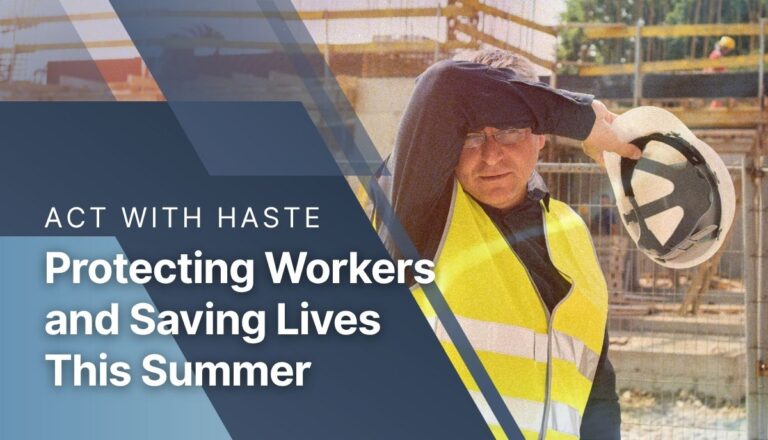Cutting sugarcane requires demanding physical effort from its workers unlike that of other jobs. Add to the mix a scorching sun whose rays beat down on workers’ bodies, and it’s easy to imagine how the job takes a toll on those who cut sugarcane stalks daily for weeks on end. La Isla Network’s efforts to protect workers through scientifically optimized rest, shade, hydration and hygiene protocols have safeguarded the health of many workers as they toil in these jobs.
Even so, laborers must be cognizant of the inherent hazards that come with the job, like heat stress, muscle fatigue and kidney strain.
A new study from La Isla Network, published in the European Journal of Applied Physiology, sheds light on just how much recovery time — and the environment outside the fields — matters for these workers’ health.
Workers Push On Despite Protections
Despite interventions like rest, shade, hydration and hygiene, the study revealed significant physiological strain on sugarcane workers during a four-day observation period. Researchers closely monitored 20 male workers, collecting data on fluid consumption, heart rate, kidney function and more.
Importantly, these men’s core temperatures stayed within safe ranges: below 100.4°F/38°C. However, biomarkers showed that muscle damage and kidney strain accumulated throughout the week.
What was perhaps more surprising was that after just one night of rest, these markers returned to baseline — whether it was midweek or after the weekend. However, the research uncovered a slow build-up of systemic inflammation over the course of the week, raising concerns about hidden risks that could escalate into chronic health problems, like kidney disease.
A New Understanding of Recovery — and Its Limits
At the heart of this research lies a critical question: how well do sugarcane workers recover between shifts? Previous studies have focused on individual workdays or looked at kidney function across entire harvests. This study’s focus on short-term recovery adds a new dimension, revealing that while workers’ kidneys may recover overnight, the cumulative stress on muscles and inflammatory markers might still present long-term risks.
Researchers also looked beyond the fields, documenting the living conditions workers return to each day. Most wake up around 2:40 a.m. to catch transport to the fields, with home temperatures often lingering at 25–30°C/77–86°F even at night, creating further barriers to complete recovery.

“We knew intuitively about these challenges,” said the study’s lead author and La Isla Network investigator Dr. Rebekah Lucas, “but documenting them shows just how much these conditions affect recovery.” Dr. Lucas is Lecturer in Physical Activity and Health at the University of Birmingham. She examines human tolerance and adaptation to physical and environmental stressors, with a focus on occupational heat stress.
From Field Research to Future Solutions
For La Isla Network, this study highlights the importance of advancing worker health protections beyond the traditional rest-shade-hydration framework. What that means is creating worker protection protocols that employ the principles of the rest-shade-hydration model while conducting holistic physiological data monitoring. In other words, tracking worker health through their vitals over the course of the work shift (Figure 1).

Jason Glaser, CEO of La Isla Network, emphasizes the need to monitor workers more closely to prevent the build-up of inflammation and other markers of strain. “Our goal is to not only protect workers today but also ensure their health over the entire harvest — and beyond,” he says.
The La Isla Network research team plans to explore new avenues for personalized health monitoring, including point-of-care diagnostic tools that can assess individual workers’ stress levels in real-time. These tools could help managers adjust workloads or shift tasks to prevent acute risks before they escalate. As Dr. Lucas explained, “We’re working toward real-time solutions that ensure each worker gets the right intervention at the right time.”
A Call to Action: Your Support Matters
The findings from this study underscore the urgency of La Isla Network’s work and highlight why research alone isn’t enough. It takes sustained effort, resources and commitment to develop the tools and interventions needed to protect workers from the hidden risks of heat stress.
You can be part of the solution. Our fundraising campaign runs through the end of the year, with a goal of raising $15,000. Your contributions will help fund vital research, pilot new monitoring systems and implement field-tested interventions in some of the world’s most demanding labor environments.
When extreme becomes the norm, your action becomes essential. Together, let’s build a safer future for those who harvest the world’s food. Donate today to support our mission.

La Isla Network is an occupational health research and advisory nonprofit dedicated to ending heat-related illnesses among workers and their communities worldwide. We develop and implement data-driven worker protection and management assessment protocols to improve the resiliency of workforces and businesses to heat stress. Our work is backed by best-in-class researchers, industry leaders and government and multilateral institutions like the ILO. For more information please email in**@***********rk.org.








